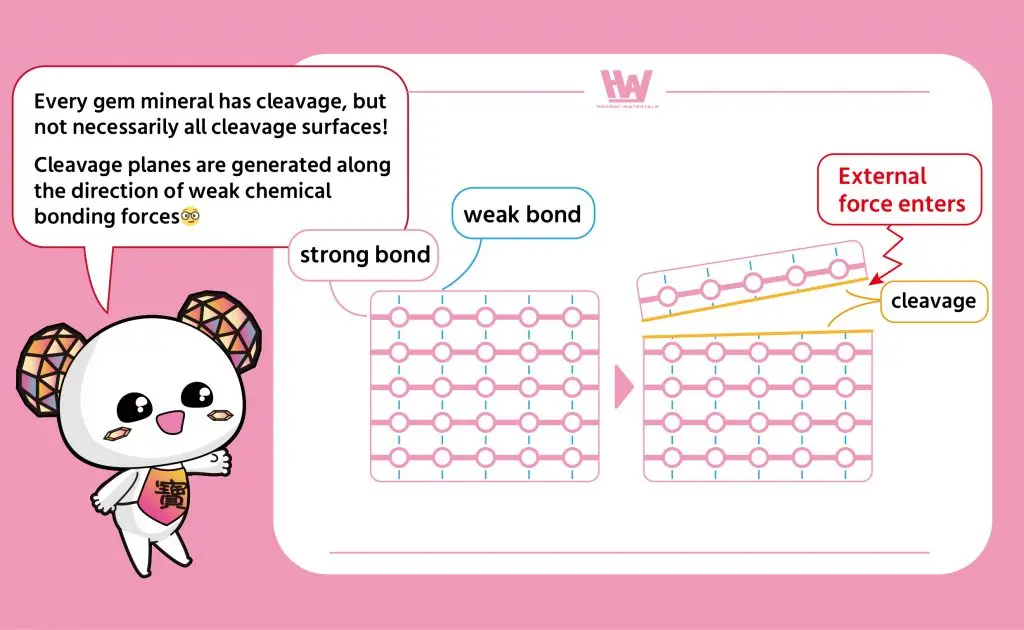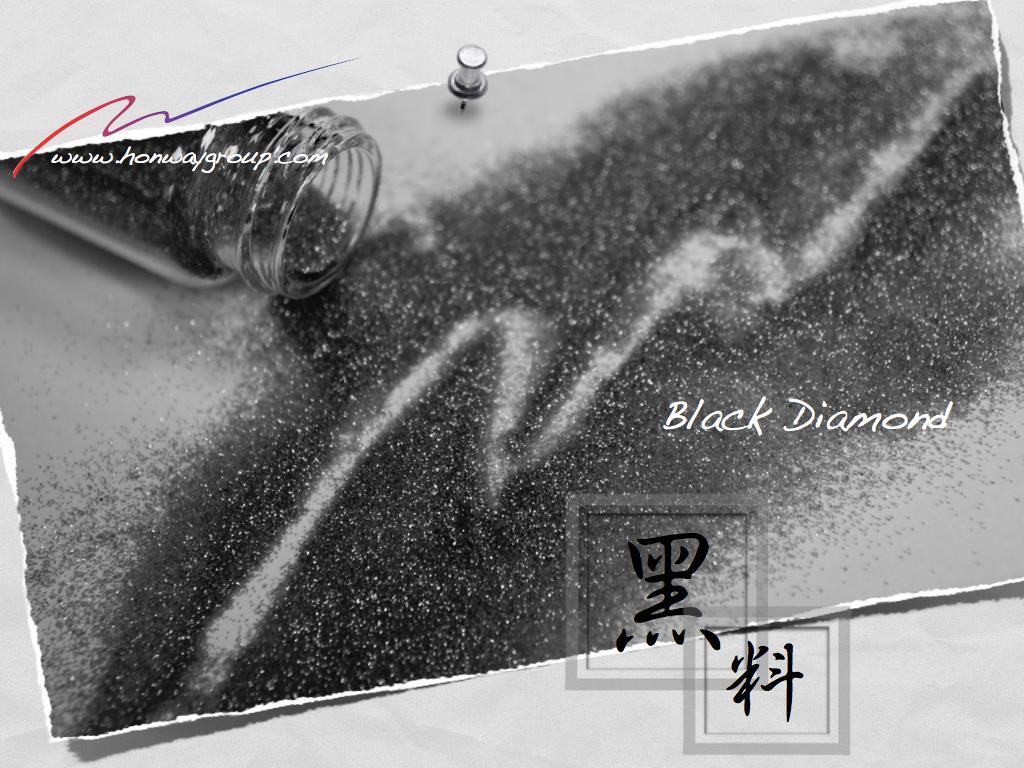Introduction to cleavage
Cleavage refers to the tendency of a crystallized mineral to break along planes of weakness within the crystal structure, forming smooth surfaces, under the influence of external force. The direction and ease of cleavage are controlled by the crystal structure. Since crystals are anisotropic, the bonding strength varies between different directions and planes. Generally, cleavage planes are parallel to the crystal faces. For example, if a gemstone has one set of cleavage, in the gemstone industry, this characteristic is utilized by striking along the cleavage plane to break it before cutting and polishing.
For gemstone minerals, it is crucial to pay attention to the cleavage properties during design and polishing to avoid cracking easily upon impact.

Detailed Classification of Cleavage Planes into Five Grades:
| Cleavage grades | Ease of Cleavage | Mineral |
| Perfect Cleavage | The mineral easily splits into thin sheets, forming large, smooth, and flat cleavage planes. | e.g. mica and gypsum |
| Good Cleavage | A light hammer strike will cause the mineral to split along the cleavage plane into small pieces, with fairly smooth cleavage planes. | e.g. kyanite, fluorite, calcite, feldspar |
| Fair Cleavage | The cleavage plane often does not break completely through, is not very smooth, and is discontinuous. | e.g. chrysoberyl, orthoclase |
| Poor Cleavage | Cleavage planes are difficult to observe, and most fractures are irregular. | e.g. olivine and apatite |
| No Cleavage | No cleavage | e.g. ruby, sapphire, tourmaline, zircon, and garnet |
Number of cleavage planes: If a mineral has multiple parallel cleavage planes, it is said to have one set of cleavage planes. Cleavage planes usually correspond to weak planes within the mineral crystal. If a mineral has multiple weak planes in different directions, it will exhibit multiple sets of cleavage planes.
Cleavage angle: If a mineral has two sets of cleavage planes, the angle between them is known as the cleavage angle, which is the angle between specific crystal faces within the crystal. Cleavage angles can generally be categorized into right angles, acute angles, and obtuse angles. The cleavage angle can be an important indicator in the identification of certain minerals.
Summary
Each gemstone crystal system has a different structural arrangement, resulting in varying numbers and angles of cleavage planes. For instance, mica has one set of perfect cleavage, while calcite has three sets of perfect cleavage. The morphology of minerals is often related to cleavage, as seen in mica, which can be split into thin layers, and Iceland spar, which fractures into rhombohedra. These characteristics can be used to differentiate between minerals.
Cleavage is an inherent property of gemstones, and its presence depends on the symmetry of the gemstone. Even perfectly crystallized diamonds, though free from fractures, still have cleavage planes. When designing and polishing gemstones, it is important to pay special attention to their cleavage properties to avoid cracks from slight impacts.
Follow Honway to learn more about gemstones~
Citation
National Digital Archives Program/National Museum of Natural Science
It turns out that gemstones also have OCD: even when they break, they do so in a smooth, flat, and grand manner. Original text URL: https://kknews.cc/collect/66xly63.html

